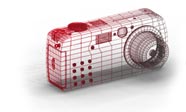|
|
Main / How to...
Do you own a digital camera but don't know how to get started with digital photography? Are you a seasoned amateur who just wants to learn a little extra to help your images pop? Read these articles to develop better photography skills:
| How to: |
How to Start Learning Digital Photography
While very easy to operate, even the simplest digital camera is capable of far more than most people use it for. Some features of a camera defy common knowledge and relying on what is intuitive will sometimes stand in your way of taking a good picture.
Guidance to Take Digital Photos - Take Good Pictures Instantly
As a beginner, you need a guidance to take digital photos. Taking many pictures is a good way to learn, but it's much more effective if you learn some basic aspects up-front. There are some basic rules in photography that you simply need to know about.
Take Better Pictures
Learn how to create beautiful and interesting photos-and avoid common photo mistakes.
Understanding Resolution
The key to editing, scanning, and printing images lies in understanding how pixels transform into inches and vice versa.
Creating Digital Images
Follow the tenets of good composition for any image you are putting on a web page. If anything, this is even more important for web page images as visitors may be scrutinizing them in more detail as the images download.
About Compression
When you shoot a digital image, it must be saved in a digital file format, and your choice (or lack thereof) of that file format helps to determine the amount of compression that is applied to the image. What compression does, as its name implies, is to compress the data inside of the image so that its file size is smaller and thus takes up less disk space. Compression, when used correctly, is an extremely beneficial tool.
How Shutter Speed Work
Traditionally, the shutter speed is the amount of time that light is allowed to pass through the aperture. Think of a mechanical shutter as a window shade. It is placed across the back of the aperture to block out the light. Then, for a fixed amount of time, it opens and closes.
Controlling Light
It is important to control the amount of light that reaches the sensor. Thinking back to the water bucket analogy, if too much light hits the sensor, the bucket will fill up and won't be able to hold any more.

|
|


